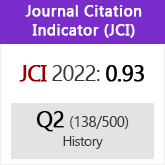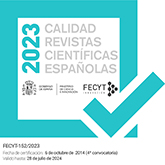El miedo como arma de dominación: admiración, pavor y victoria en la imagen del rey guerrero en el helenismo inicial
DOI:
https://doi.org/10.3989/gladius.2014.0004Palabras clave:
Reyes helenísticos, Alejandro Magno, Macedonia, Guerrero invencible, Medusa, Phobos, Pan, ÉgidaResumen
El rey fue la figura más importante de todo el período helenístico. Fue un guerrero invencible, un gobernante sabio, dios, general y curador. Todos estos aspectos sobre la monarquía helenística son bien conocidos, sin embargo hay una cuestión que no ha sido estudiada por los investigadores, es decir, la capacidad de los reyes helenísticos para hacer huir a sus enemigos conmoviéndolos por el miedo con su mera presencia. En este artículo analizamos historias relacionadas con Pérdicas, Olimpíade, Pirro y Alejandro Magno. Nuestra opinión es que todas estas historias están basadas en el mismo modelo, la lucha entre Aquiles y los troyanos en la Ilíada (XVIII 203-23). La égida es estudiada como la justificación mítica de la invencibilidad y terribilidad de los reyes. Además, contemplamos la posibilidad de que este fenómeno estuviese asociado con los reyes de Macedonia antes de Alejandro.
Descargas
Citas
Ameling, W. (1988): "Alexander und Achilleus: ein Bestandsaufnahme", in W. Will and J. Heinrichs (eds.), Zu Alexander dem Grossen, Festschrift G. Wirth, II, 657-92.
Antela-Bernárdez, B. (2007): "Alejandro Magno o la demostración de la divinidad", Faventia, 29.1: 89-103.
Antela-Bernárdez, B. (2009): "Sucesión y Victoria. Una aproximación a la guerra helenística", Gerión, 27,1, 161-177.
Arriano. (1982): Anábasis de Alejandro Magno I-III. Madrid: Biblioteca Clásica Gredos. A. García Bravo (intr.); Antonio Guzmán Guerra (trad. y notas).
Arriano. (1982): Anábasis de Alejandro Magno IV-VIII (India). Antonio Guzmán Guerra (trad. y n.). Madrid: Biblioteca Clásica Gredos.
Austin, M. M. (1986): "Hellenistic kings, war, and the economy", CQ, 36, 450-466.
Berve, H. (1926): Das Alexanderreich auf prosopographischer Grundlage, vols. I-II. Munich 1925-1926, reimpreso en New York 1973.
Bing, J. D. (1988): "Alexander's sacrifice dis praesidibus loci before the Battle of Issus", JHS, 111, 161-5. http://dx.doi.org/10.2307/631893
Borza, E. N. (1981): "The Macedonian Tombs at Vergina: Some Cautionary Notes", Archaeological News, 10, 1981, 73-87.
Borza, E. N. (1987): "The Royal Macedonian Tombs and the Paraphernalia of Alexander the Great", Phoenix, 41, 105-121. http://dx.doi.org/10.2307/1088739
Borza, E. N. (1990): In the Shadow of Olympus. The Emergence of Macedon. Princeton.
Bosworth, A. B. (2002): Legacy of Alexander Politics, Warfare and Propaganda under the Successors, Oxford University Press.
Callaghan, P. (1981): "The Medusa Rondanini and Antiochus III", ABSA, 76, 59-70. http://dx.doi.org/10.1017/S0068245400019468
Carlier, P. (2000): "Homeric and Macedonian Kingship", in Alternatives to Athens. Oxford, 259-68.
Carney, E. D. (2006): Olympias: mother of Alexander the Great. London.
Chaniotis, A. (2012): "Moving stones. The Study of Emotions in Greek inscriptions". En A. Chaniotis (ed.), Unveiling Emotions. Sources and Methods for the Study of Emotions in the Greek World. Stuttgart, 91-129.
Chiaro, M. del (1981): "A monumental Etruscan head Medusa", GettyMusJ, 9, 53-8.
Collins, A. W. (2001): "The Office of the Chiliarch under Alexander and the Successors", Phoenix, 55.3/4, 259-283. http://dx.doi.org/10.2307/1089121
Curcio Rufo, Q. (1986): Historia de Alejandro Magno. Madrid, Biblioteca Clásica Gredos. Francisco Pejenaute Rubio (trad. y n.)
Dahmen, K. (2007): The legend of Alexander the Great on Greek and Roman coins. New York.
Errington, R. M. (1969): "Bias in Ptolemy's History of Alexander", CQ, 19, 233-42.
Errington, R. M. (1974): "Macedonian 'Royal Style' and its Historical Significance", JHS, 94, 20-37. http://dx.doi.org/10.2307/630417
Esquines. (1999): Discursos. Madrid, Ediciones Clásicas, José Miguel García Ruíz (trad.).
Gabbert, J. J. (2004): Antigonus II Gonatas: a political biography. London & New York.
Gabriel, R. A. (2010): Philip II of Macedonia: Greater than Alexander. Washington.
Girtzy, M. (2001): Historical topography of Ancient Macedonia. Thessaloniki.
Grainger, J. (2007): Alexander the great failure: the collapse of the Macedonian Empire. London & New York.
Granier, F. (1931): Die makedonische Heeresversammlung. Ein Beitrag zum antiken Staatsrecht. Munich.
Grossman, J. B. (2001): "Images of Alexander the Great in the Getty Museum", in Studia Varia, 51-78.
Galanakis, Y. (2011): "Aegae: 160 years of archaeological research", in Heracles to Alexander the Great. Treasures from the Royal Capital of Macedon, a Hellenic Kingdom in the Age of Democracy. Oxford: Ashmolean Museum of Art and Archaeology, University of Oxford, 49-58.
Graekos, I. (2011): "War and hunting: the world of the Macedonian king and his companions", in Heracles to Alexander the Great. Treasures from the Royal Capital of Macedon, a Hellenic Kingdom in the Age of Democracy. Oxford, Ashmolean Museum of Art and Archaeology: University of Oxford, 75-92.
Guzmán Guerra, A. (1986): Alejandro Magno. Plutarco/Diodoro Sículo. Madrid: Akal.
Hammond, N. G. L. (1989): The Macedonian State. Origins, Institutions and History. Oxford 1989.
Hammond, N. G. L. (1990): "Royal Pages, Personal Pages and Boys Trained in the Macedonian Manner during the Period of the Temenid Monarchy", Historia, 39, 261-90.
Hazzard, R. A. (1995): "Theos Epiphanes: Crisis and Response", HThR, 88.4, 415-36. http://dx.doi.org/10.1017/S0017816000031692
Heckel, W. (1992): The marshals of Alexander the Great. London.
Heckel, W. (2006): Who's who in the age of Alexander the Great. Prosopography of Alexander's empire. Blackwell. http://dx.doi.org/10.1002/9780470757604
Homero (1991): Ilíada. Emilio Crespo (trad. y n.). Madrid: Biblioteca Clásica Gredos.
Houghton, A. y Lorber, C. (2002): Seleucid coins: a comprehensive catalogue, I-II. New York.
Jacob, Ch. (1991): "Alexandre et la maitrise de l'espace", QS, 34, 5-40.
Johnson, C. G. (1999): "The Divinization of the Ptolemies and the Gold Octadrachms Honoring Ptolemy III", Phoenix 53, 50-6. http://dx.doi.org/10.2307/1088122
Justino. (1995): Epítome de las filípicas de Pompeyo Trogo, J. Castro Sánchez (ed. y trad.). Madrid: Biblioteca Clásica Gredos.
Kottaridi, A. (2011): "The Legend of Macedon: a Hellenic kingdom in the age of democracy", in Heracles to Alexander the Great. Treasures from the Royal Capital of Macedon, a Hellenic Kingdom in the Age of Democracy. Oxford: Ashmolean Museum of Art and Archaeology. Oxford: University of Oxford, 1-24.
Le Bohec, S. (2002): "The kings of Macedon and the cult of Zeus in the Hellenistic period", in D. Ogden (ed.), The Hellenistic world: new perspectives, Swansea, 41-57.
Leaky, W. M. (1856): Numismata Hellenica: a Catalogue of Greek Coins Collected. London.
Leon, C.F. (1989): "Antigonos Gonatas Rediscovered", AncW, 20, 21-25.
Lock, R. A. (1977): "The Macedonian Army Assembly in the Time of Alexander the Great", CPh, 72, 91-107. http://dx.doi.org/10.1086/366331
Molina Marín, A. I. (2009): "Política y confrontación en los banquetes macedonios en la obra de Plutarco", in Symposion and Philanthropia in Plutarch. Coimbra: Universidad de Coimbra 2009, 201-9.
Molina Marín, A. I. (2012): Alejandro Magno. Apotheosis y Paideia. La figura del gobernante entre el homenaje y la teoría política: Editorial Académica Española.
Mossman, J. M. (1988): "Tragedy and epic in Plutarch's Alexander", JHS, 108, 83-93. http://dx.doi.org/10.2307/632632
Nylander, C. (1993): "Darius III - the Coward King. Points and Counterpoints", in J. Carlsen et al. (eds.), Alexander the Great. Reality and Myth. Rome, 145-59.
O'brien, J. M. (1992): Alexander the Great. The Invisible Enemy. London & New York.
Ogden, D. (2008): Perseus. New York: Routledge.
Ogden, D. (2011): Alexander the Great. Myth, Genesis and Sexuality: Univerty of Exeter Press.
Plutarco, (1968): Vidas paralelas. Barcelona, Editorial Vergara, Antonio Ranz Romanillos (trad.).
Plutarco, (1989): Obras Morales y de costumbres (Moralia), M. López Salva, (trad.). Madrid: Biblioteca Clásica Gredos.
Pritchett, W. K. (1979): The Greek State at War, III. London.
Roisman, J. (2003): "Honor in Alexander's campaign", in Brill's companion to Alexander the Great. Brill: 279-321.
Roisman, J. (2012): Alexander's Veterans and the Early Wars of the Successors, University of Texas Press.
Rollinger, R. y Ruffing, K. (2012): "•Panik' im Heer: Dareios III., die Schlacht von Gaugamela und die Mondfinsternis vom 20. September 331 v. Chr", Iranica Antiqua, XLVII, 101-115.
Romm, J. R. (2011): Ghost on the throne. The death of Alexander the Great and the war for crown and empire. New York.
Sawada, N. (2011): "Social Customs and Institutions: Aspects of Macedonian Elite Society", in A companion to Ancient Macedonia, Blackwell, 392-408.
Stewart, A. (1993): Faces of power. Alexander's image and Hellenistic Politics. Berkeley.
Sturtevant, E. H. (1926): "Centaurs and Macedonian Kings", CPh, 21,3, 235-49. http://dx.doi.org/10.1086/360788
Svenson D. (1995): Darstellungen hellenistischer Könige mit Götterattributten. Frankfurt.
Vernant, J-P. (1996): La muerte en los ojos. Barcelona: Gedisa.
Waterfield, R. (2011): Dividing the spoils. Oxford: Oxford University Press 2011.
Wheeler, E. L. (2007): The armies of classical Greece. Aldershot: Ashgate.
Worman, N. (2004): "Insult and Oral Excess in the Disputes between Aeschines and Demosthenes", AJPh, 125, 1, 1-25. http://dx.doi.org/10.1353/ajp.2004.0011
Yardley, J. C. y Atkinson, J. E. (2009): Curtius Rufus. Histories of Alexander the Great. Book 10. Oxford.
Descargas
Publicado
Cómo citar
Número
Sección
Licencia
Derechos de autor 2014 Consejo Superior de Investigaciones Científicas (CSIC)

Esta obra está bajo una licencia internacional Creative Commons Atribución 4.0.
© CSIC. Los originales publicados en las ediciones impresa y electrónica de esta Revista son propiedad del Consejo Superior de Investigaciones Científicas, siendo necesario citar la procedencia en cualquier reproducción parcial o total.Salvo indicación contraria, todos los contenidos de la edición electrónica se distribuyen bajo una licencia de uso y distribución “Creative Commons Reconocimiento 4.0 Internacional ” (CC BY 4.0). Puede consultar desde aquí la versión informativa y el texto legal de la licencia. Esta circunstancia ha de hacerse constar expresamente de esta forma cuando sea necesario.
No se autoriza el depósito en repositorios, páginas web personales o similares de cualquier otra versión distinta a la publicada por el editor.














